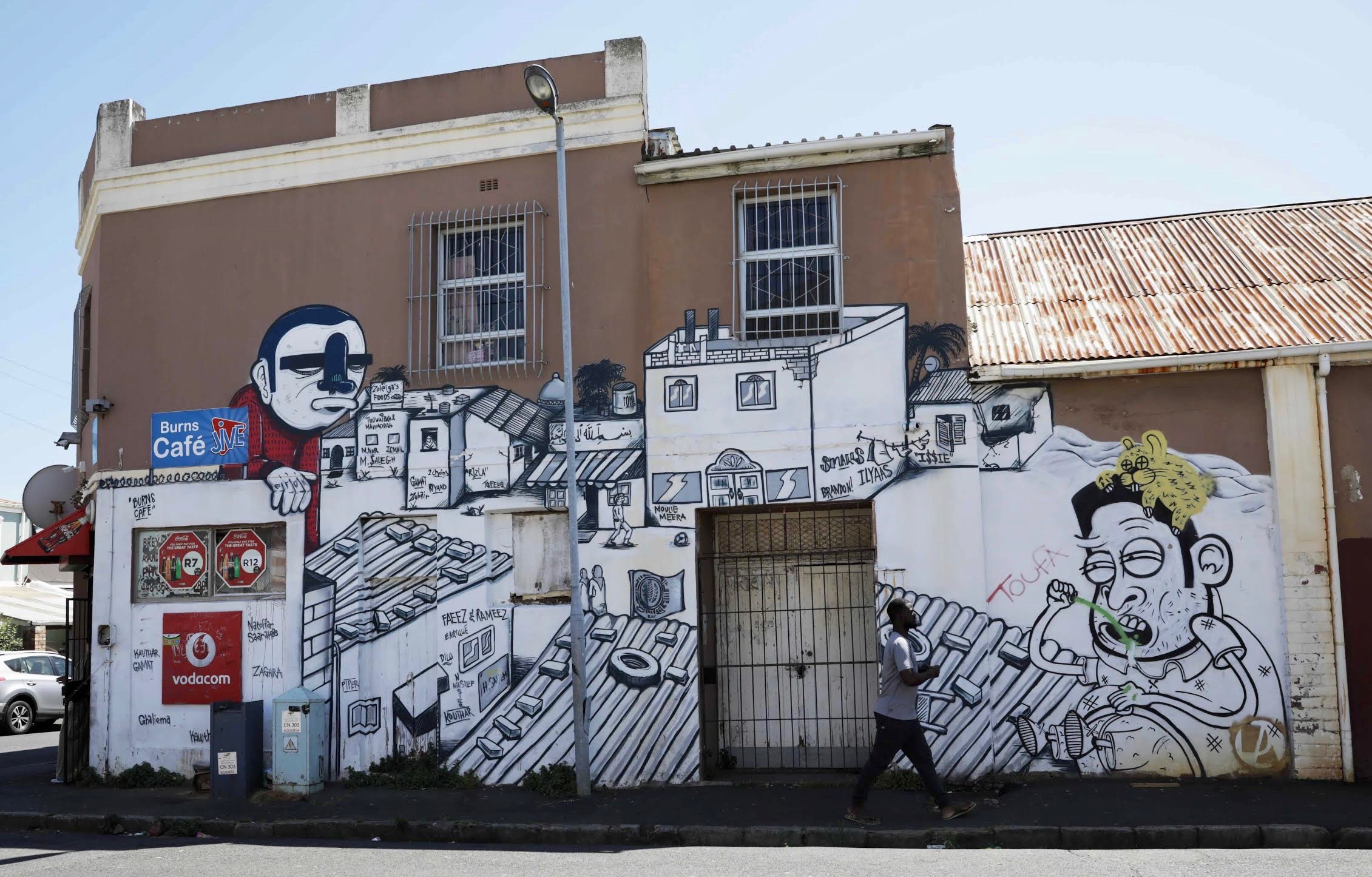By Claudia Stagoff-Belfort
MAIN IMAGE: A mural in Salt River painted by South African graffiti artist Fok for the 2017 International Public Arts festival. SOURCE: Esa Alexander, Sunday Times
On the corner of Loop and Strand Streets in central Cape Town, a lighthouse stands ten stories high, bright and bold over the rush hour traffic that backs up through the central business district.
The lighthouse, painted in blues and yellows on the site of a downtown redevelopment project, is an intentional means of urban beautification, chosen to remind us of the city’s ocean heritage.
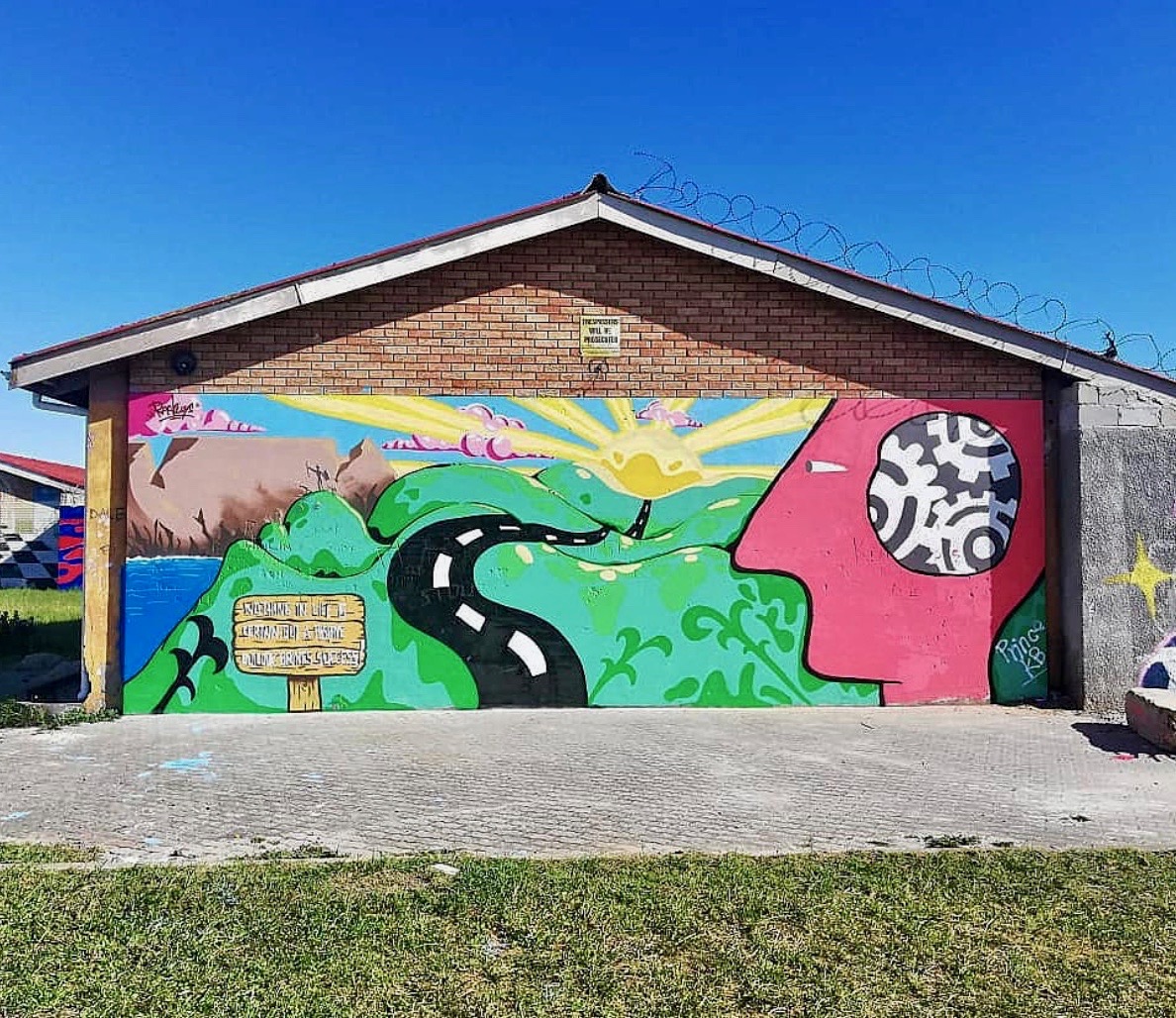
Across the city at Factreton Primary School, black kale flourishes in hydroponic beds, spinach grows profusely in vertical tiers and fish live in tanks in the foyer. Worms are used as fertilizer, so that no water is wasted and the produce feeds 100 learners every day. Where once the walls at the school gates stood blank, now flashes of green, blue, purple and pink combine into vibrant images of vegetation and bees.
The mural in the working class suburb of Factreton, created by the Cape Town street art collective Raak Wys, and the lighthouse, a joint collaboration between Ukranian artist Aleksandr Nikitiuk and street art NGO Baz-Art, are glimpses into an evolving world of public wall art in Cape Town. Here artists are grappling not just with the way people see their work and how the city’s bylaws shape what they can do, but also with internal debates in the street art scene about credibility and aim.
Street artists and graffiti writers across the spectrum are all trying to tell a story. The question is: how, where and with whom should the story be told.
Raak Wys enters the street art world with a specific focus. While some artists will gladly work on any free wall or space that is available, the thirteen-person collective argues that the location they choose not only matters, but determines the content they create.
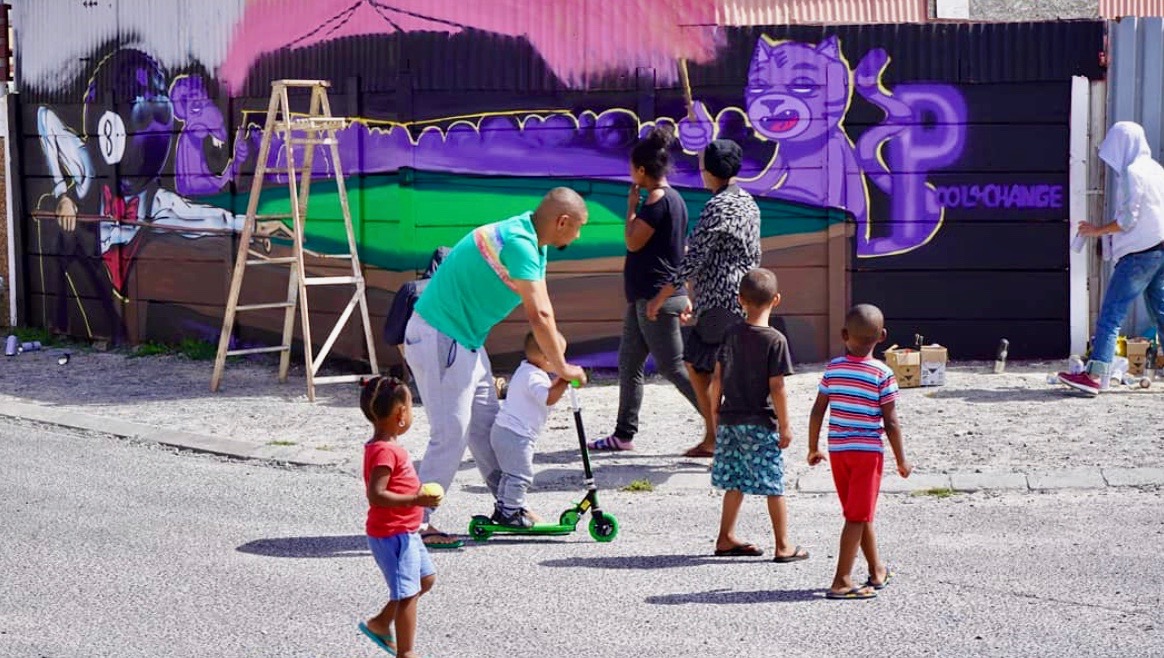
A Raak Wys mural on the wall of Pool4Change, a non-profit working to create a school pool league in Seawinds. SOURCE: @Raak_Wys
Some in the public art community have criticized the City for welcoming street artists from elsewhere in the world whose projects change the face of the CBD.
Raak Wys member Nabeel Peterson says that the street art push into Salt River and Woodstock that uses some non-local artists contributes to a perception that Cape Town is not designed by its people. For Peterson and the rest of the collective, it is important to give voice to community stories rather than incorporating external narratives.
“We want to use our collective tool kit to focus on the local narratives and stories that never get told,” he said.
But others feel strongly that international artists add a valuable extra dimension to street art in Cape Town.
International collaboration is central to the mission of Baz-Art, with the belief that this yields the added benefit of developing skills and broadening content.
Their work is two-fold. They host an annual International Public Arts Festival when international and local artists come together to create art on the walls of homes and other buildings in the suburb of Salt River. They also consult with city authorities, individual home-owners and owners of corporate buildings to find places to produce art, and jobs for the street artists they work with.
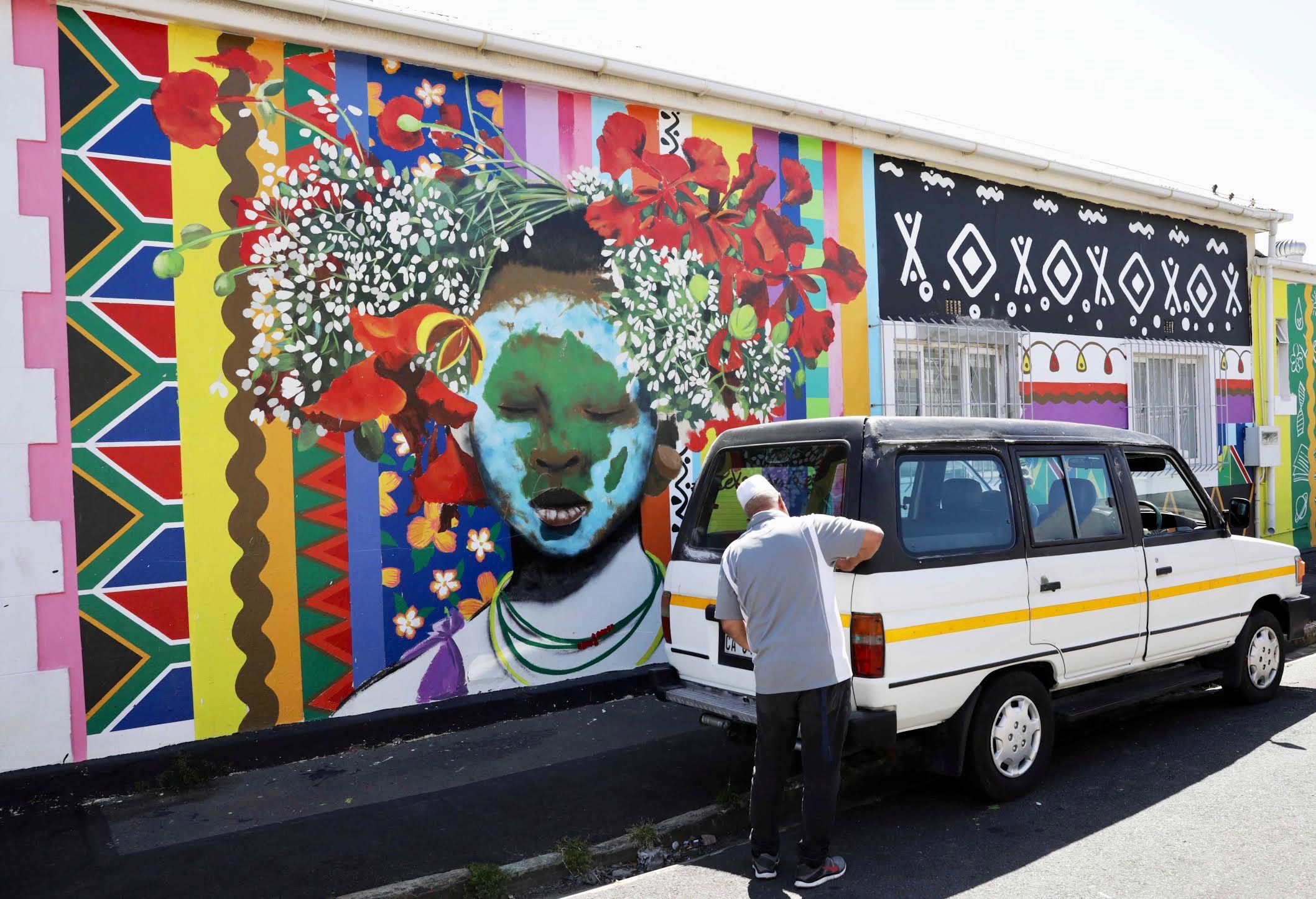
Baz-Art has painted over 100 walls in Salt River since the inception of the festival four years ago.
“Bringing international artists to South Africa allows for an exchange,” said Alexandre Tilmans, Baz-Art founder. “For artists who haven’t had the chance to go abroad and travel, they get to learn more about what’s happening on the other side of the world in terms of skills, knowledge, possibilities. It shows artists that it’s possible to be a professional street artist and make a career out of it.”
Salt River resident, Anthea van der Brock first learned of the work of Baz-Art when they came looking for viable walls to paint near her home. Involved in the tourist industry, she soon became a Baz-Art street art tour guide. Van der Brock echoes Tilman’s words, saying that the festival, “puts our artists on the international level, pushing us up onto the international platform.”
Members of Raak Wys have a different approach. They are concerned to create public art that is strictly connected to the residents and beneficiaries of those spaces. In addition to telling local stories, it provides the opportunity for people living nearby to engage with art.
“We realized that growing up none of us really had art in our homes. What would happen if everyone had the same opportunity [to be exposed to art at a young age]?” Peterson said.
Writers Only, a new Cape Town graffiti group comprised of “writers” Fersyndicate, Smet and Nardstar, is using another form of public art to tell local stories. Historically, graffiti artists have referred to themselves as “writers”, as distinct from street artists who have branched away from the “pure” form of the art.

For them it is important to keep graffiti in Cape Town viable and alive. Fersyndicate, whose real name is Quasiem Cassiem, says it is a dying art form.
“There’s a big educational part of it because we need to demystify the stereotypes. People see graffiti artists as people who come out as night, like vampires, and just cause all sorts of havoc, but we are the geekiest people in all honesty. We’re just trying to paint the right picture and combat the propaganda that comes out in traditional media,” said Cassiem.
They argue that removing true graffiti from city spaces santises urban areas and hides realities that need to be recognised.
Graffiti is rough around the edges, said Cassiem, arguing that the less challenging “street art” – what he calls “the cousin of graffiti” – is an easier buy-in for the public. The traditional “tag” of graffiti is a central part of the work that Writers Only do.
They want the public to respect and appreciate the tag as much as the mural, hoping to combat the notion that the existence of graffiti is synonymous with crime.
“Your grandmother can appreciate street art, but she’s not going to like graffiti. There is a beauty in graffiti, but it’s not for everyone and we understand that.”
Many artists participating in public art recognize that working with the City is both inevitable and essential.
Writers Only is all too aware of the history between the authorities and the graffiti movement and envisions a collaboration in which there is room for education – both for the “writers” and the City.
“We are planning to work with the government. We’re trying to have an open dialogue with the City instead of working against them. If [graffiti artists] need a permit, we want to help educate them about how to get a permit, making it easier. If we can help teach the next generation, they can choose to do it this way,” Cassiem said.
Artists are increasingly capitalising on the fact that the City has begun to value public art.
“I think that Cape Town wanting to position themselves as the capital of art in Africa makes street art relevant. You cannot be a capital of the arts by forgetting some part of the industry,” Tilmans said.
Yet, interest and participation in public art remains concentrated in specific parts of the city. Raak Wys feels that the city’s level of engagement and regulation in different areas is a reflection of how it values certain spaces.
“The spaces we work in, fortunately, but also unfortunately, [don’t get] much surveillance and a lot of the work we do is internal – not visible outside. But
[in]
the areas we are working in, no one has bothered us,” said Peterson.
“I think this speaks to the politics of Cape Town ‘if it’s not in the city, we’re not going to bother to police the art’ – so it’s an interesting space that we’re working in,” he said.
Raak Wys, whose goal is to paint twenty spaces by the end of 2019, has finished eight murals, which, in addition to the one at Factreton Primary, include the Lawrence House Child Care Centre in Woodstock, Cedar High School in Rocklands/Mitchells Plain, and the building of the NGO Pool4Change.
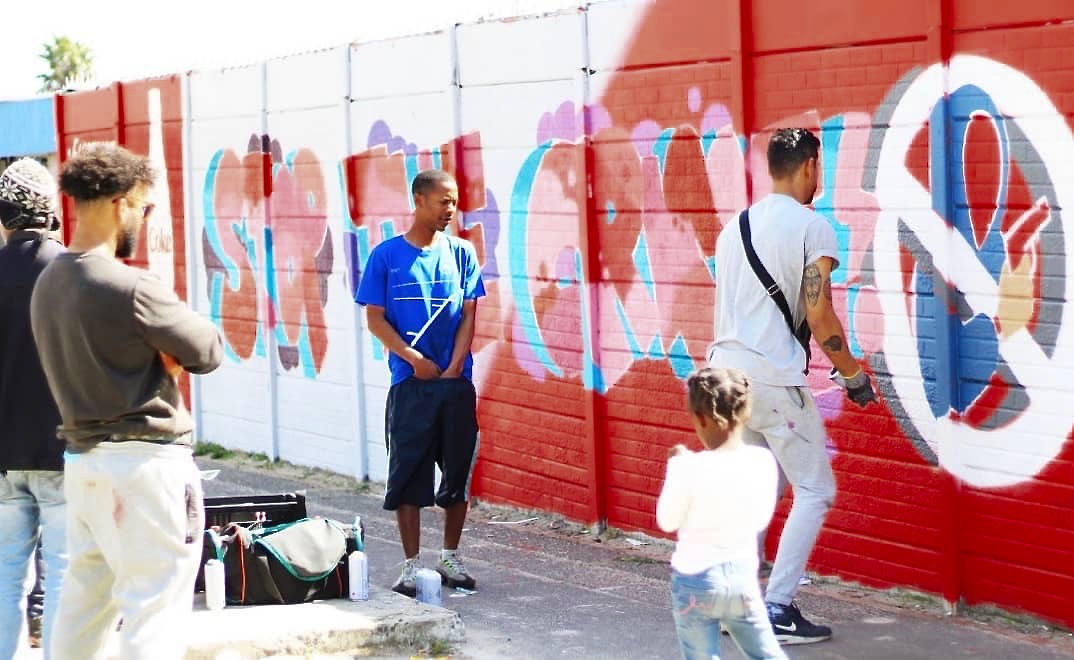
Youth are central to the spaces where Raak Wys work. They want to create an environment in which street art doesn’t start and end with the individual mural they create. Rather, the collective hopes that once sufficient funding is secured – presently the main barrier to their projects – collaboration with children and residents at schools, local organizations and community spaces will lead to a more evolved notion of public art. They view youth education and empowerment as central parts of this vision.
For the piece at Cedar High School, a learner from the school, graffiti artist, Prince Buanda, was the force behind the mural, using his signature style to create monotone heads with cogs substituting the place of a brain.
“We want to facilitate a space that allows young people to step up and participate,” Peterson said.
Factreton headmaster Paul McAvoy explained how the mural had impacted the learners at his school, and the community as a whole.
“The mural has created curiosity for both the parents and learners, it’s encouraging youngsters to start dialogue about what’s on the mural. It shows that there’s something other than drugs and nasty things, that life can be balanced and exciting,” he said.
“What I love about the [art] work is that it’s not a one size fits all approach,” he added, explaining that nature was chosen as the theme of the piece after a lengthy collaboration process with the artists involved. McAvoy wanted the wall art to reflect the school’s values and reinforce his vision of the school as a hub around which the community can evolve.
Baz-Art says their 2019 festival theme emphasised education, collaboration and empowerment of youth. The topic was aimed at bringing in younger voices from around the world. Up-and-coming artists, some of whom are the children of street artists and graffiti writers, were given the chance to bring a fresh perspective to the art form.
Writers Only’s Cassiem agrees that youth are key.
“More than anything, we want kids to have some sort of point of reference – it’s about keeping [graffiti] alive because it’s one of the biggest art movements in Cape Town,” he said.
The politics of the street art and graffiti scene reflects that of the contested spaces and history of the city with which the artists are actively engaging.
Despite their different approaches – whether it be for the purpose of beautification, expression or activism – all the artists believe strongly in the power of paint and storytelling in urban spaces.
“We want to create artwork that anyone can own,” said Peterson.
** Claudia Stagoff-Belfort was reporting from the Sunday Times newsroom in Cape Town when she produced this report




